Tomatoes are the most popular plant in the home vegetable garden or container. you can face brown leaves on tomato plants in containers.
While growing tomatoes in containers has many advantages, there are a few things to keep in mind to ensure success.
Here are some specal tips and best cultivars for patio tomatoes.
Tomatoes of all shapes and sizes are classic choices to grow in a vegetable garden, but there are also many great reasons to try them in containers.
Plants are easy to protect from critters like deer and rabbits.
Growing in containers keeps the roots away from nuisance pests and diseases that may be in the soil.
Tomatoes in containers help you control how much water you get and when your garden soil tends to be particularly wet or sandy.
Containers are also a perfect solution if you want to enjoy freshly picked tomatoes but your gardening space is limited to a patio or balcony.
Being close keeps them easy to harvest. Use this advice specifically for growing tomatoes in containers.
Select Healthy Plants For Containers
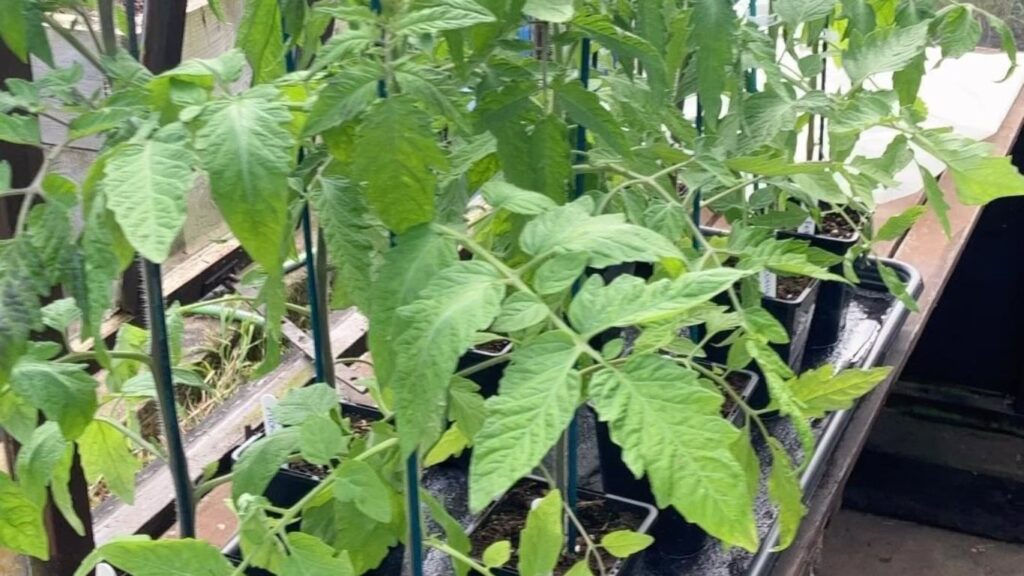
Any variety that grows in the ground can be grown in a container, but some stand out more than others. See our list of recommended varieties below.
Use a Large Container The Bigger The Better
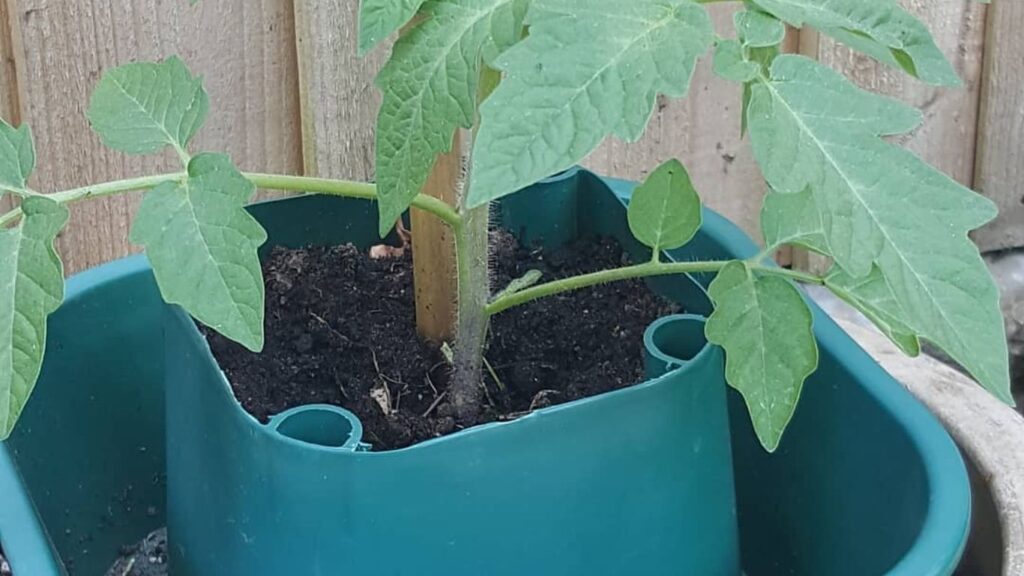
Container soil heats up and dries out faster than garden soil because of confinement, so the more breathing room you give the plant’s roots, the better.
It is possible to grow any type of tomato in a container, but it is important to match the size of the container to the size of the plant.
The most compact, or dwarf, varieties can adapt to life in 8- to 12-inch pots or even a hanging basket.
Common bush type tomatoes grow well in 5-gallon pots or buckets, although 8- or 10-gallon pots are even better.
Vining varieties, such as ‘Brandywine’ slicing tomatoes or ‘Sweet 100’ cherry tomatoes, do best in 15- to 20-gallon tubs.
So that they develop lots of roots to support their ever-elongating stems and heavy fruit production.
Choose Lighter Containers With Better Drainage
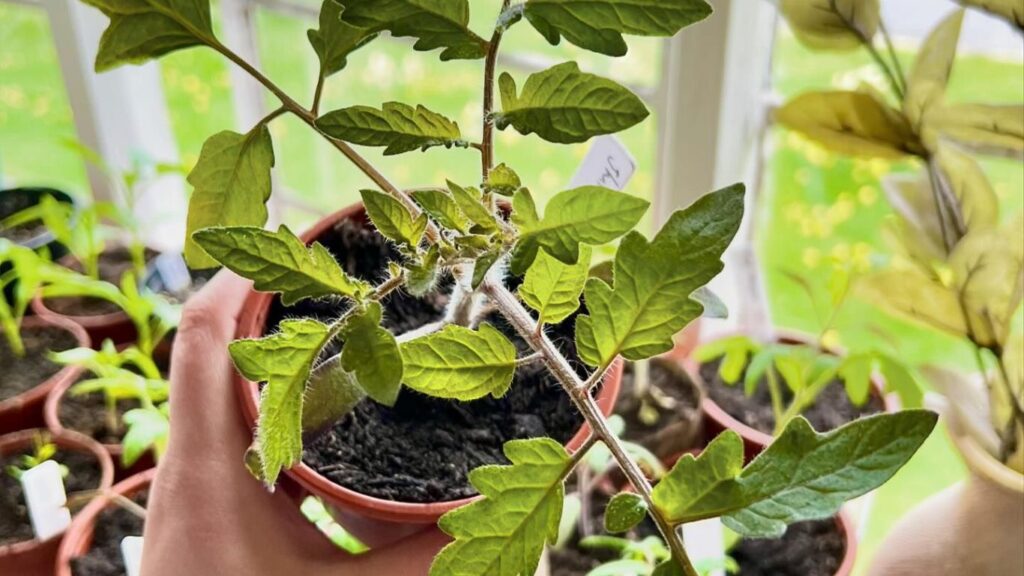
Avoid terra cotta pots, which retain heat and are heavy to move. Instead, choose light plastic with drain holes.
Place Container in Full Sun
Tomatoes do best with six to eight hours of sunlight per day.
A Potting Soil Rich in Organic Matter is Best Used
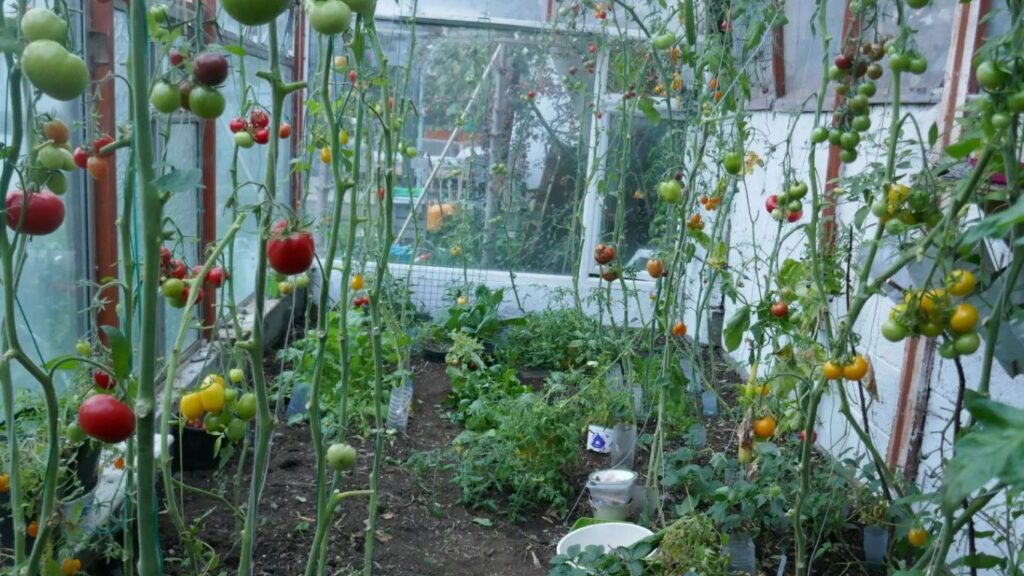
One way to do this is to replace about 25 percent of standard potting soil with equal parts of perlite, sphagnum peat moss, and compost to improve drainage and provide additional nutrients.
Add a 1- to 2-inch layer of gravel to the bottom of the pot to help with drainage.
Do not fill containers with regular garden soil that is too compact for the container.
Mix Slow-Release Fertilizer Into Soil
Make sure the soil doesn’t already include it; If not, opt for a tomato-specific fertilizer such as Espoma.
Plant The Tomatoes Deeply
Fill one-third of the pot with soil and then plant the tomatoes. Continue adding soil, packing it around the plant stem until it’s about halfway covered.
Water To Keep Soil Uniformly Moist
You want the soil to remain moist but you don’t want it to dry out completely.
Instead of automatically watering tomatoes on a fixed schedule, consider weather conditions and the appearance of the plants.
In dry, hot, windy weather, you may need to water once or even twice a day to keep them from drying out.
During monsoons, stop watering and make sure that the pots are not sitting in standing water trays or saucers, which can cause root rot.
Help Tomato Plants Grow
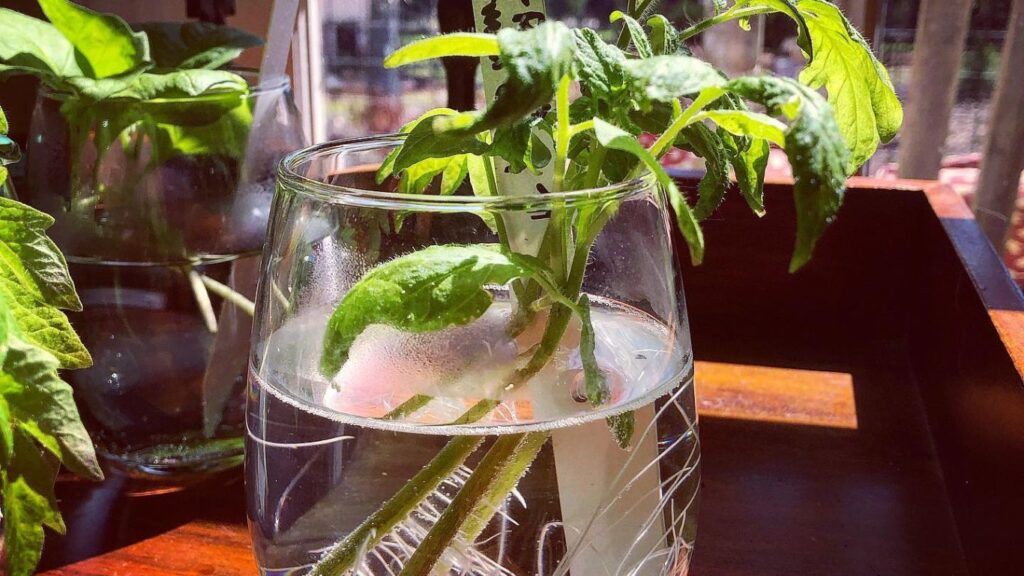
Hang them or install a tomato cage to help take the weight of the fruit off the limber vines.
Feed The Plants Once a Week Starting Around Six Weeks of Age
Choose a water-soluble fertilizer and apply it according to the directions, and watch for pests such as aphids.
Add Companion Plants If There’s Room
Ornamental annuals such as marigolds and zinnias make beautiful accents in a tomato container garden, but remember that additional plants compete with tomatoes for water so only add them if using a large container.
Harvest Tomatoes When They Are Almost Fully Red
This helps ensure fresh, tasty fruit. Of course, harvest the fruit when it reaches its desired color.
Best Tomato Varieties To Grow in Containers
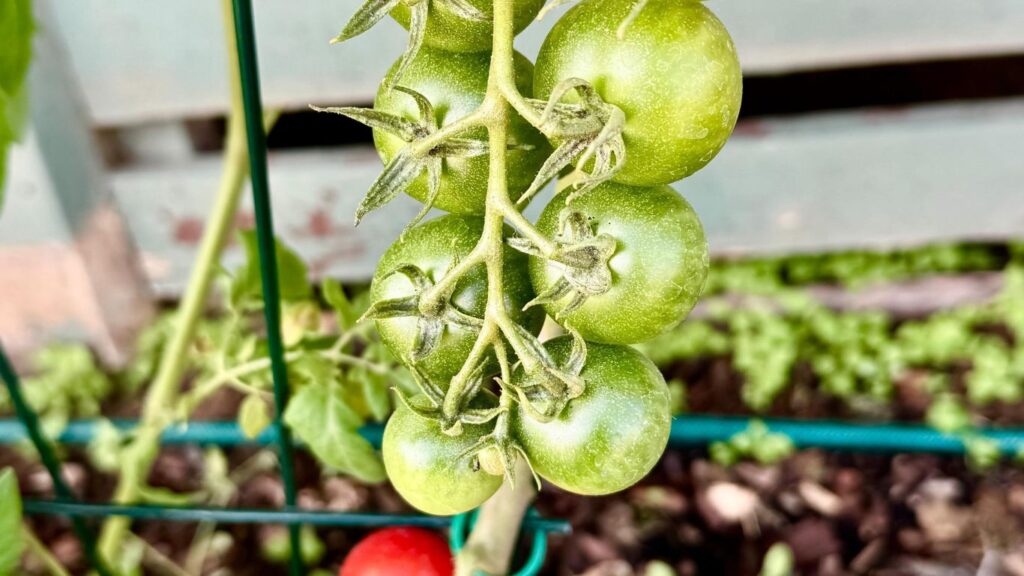
Here’s a selection of some dwarf and compact varieties that are particularly suited to pot life.
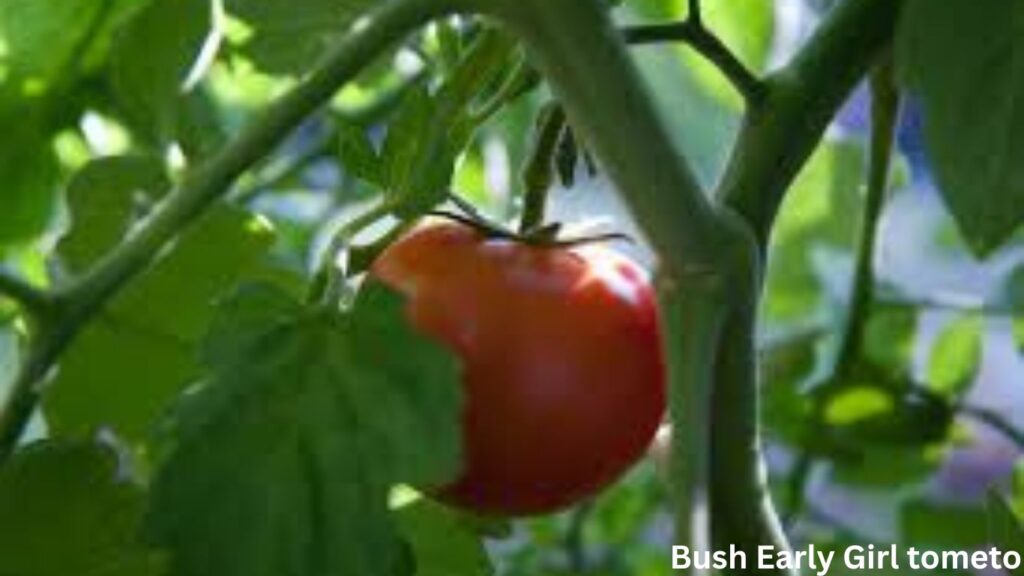
Bush Early Girl: This classic slicing-type tomato produces tasty 3- to 4-inch red fruits on 3-foot-tall plants.
It matures quickly, making it a great choice if you can’t wait for summer crops to start.
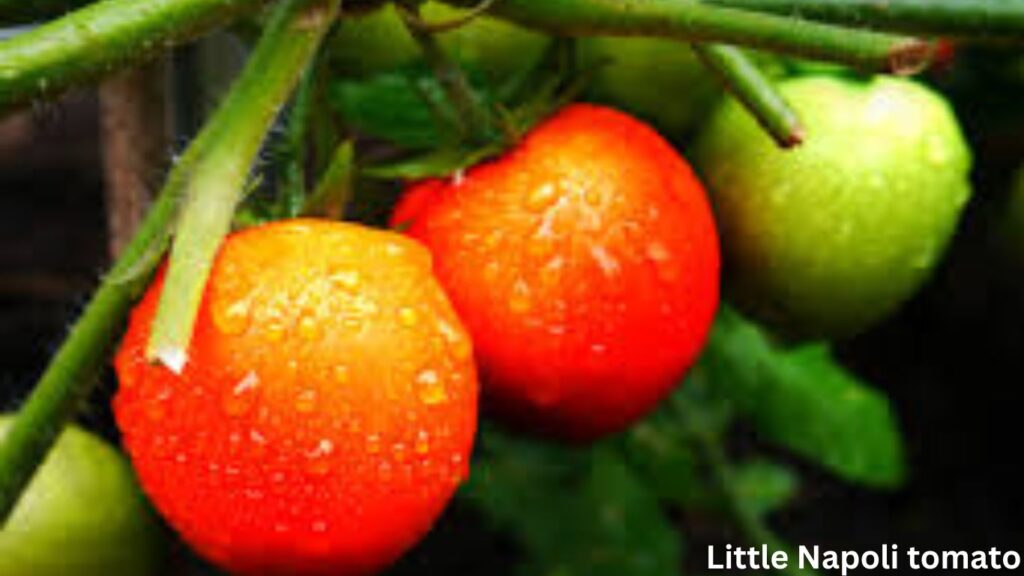
Little Napoli: One of only a few paste-type tomatoes to grow in containers, this particular variety of Roma tomato grows 12-18 inches tall and ripens fruit at the same time that it can be harvested and canned and used.
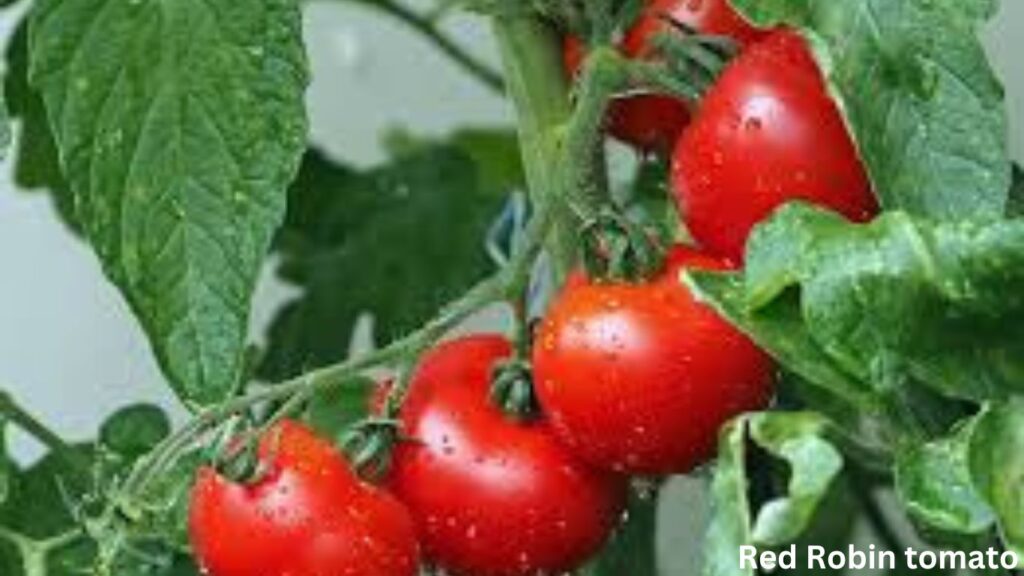
Red Robin: This popular container cherry tomato produces handsome, upright plants that are only 12 to 18 inches tall, with lots of sweet, round red fruit.
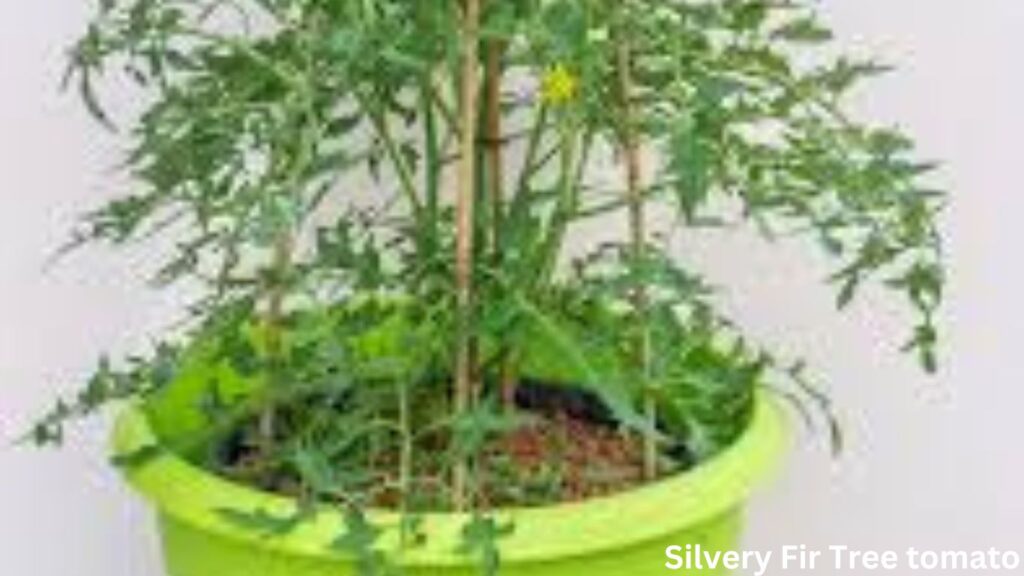
Silvery Fir Tree: With its lacy, grey-green leaves, this attractive heirloom variety looks hardly like a tomato plant.
At least until its 3-inch spherical fruit turns bright red when ripe. Productive plants are bushy and upright, typically 2 to 3 feet tall.
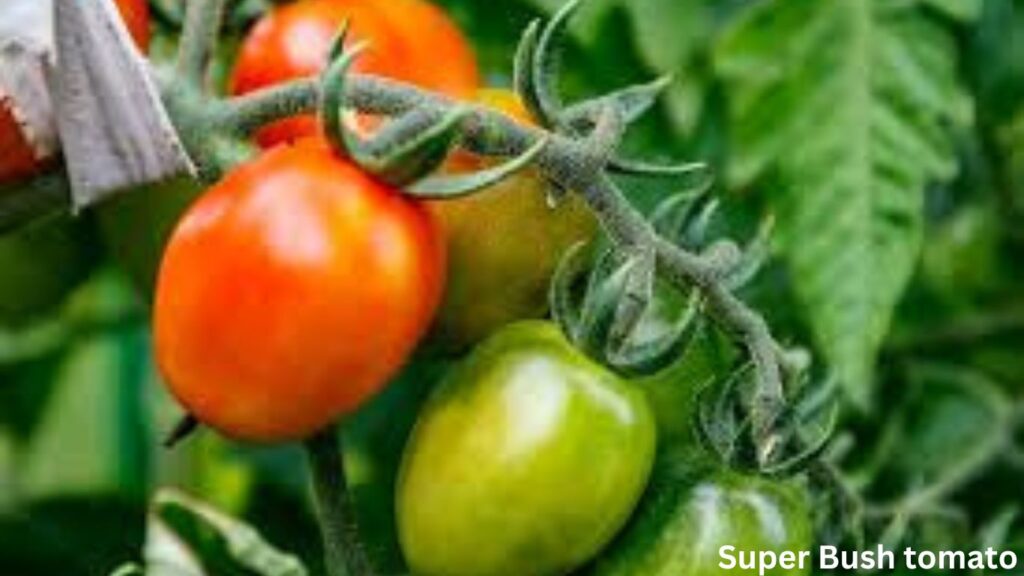
Super Bush: 3 to 4 feet tall, Super Bush’ gives you a first crop of 3- to 4-inch red fruit on strong-stemmed, upright plants.
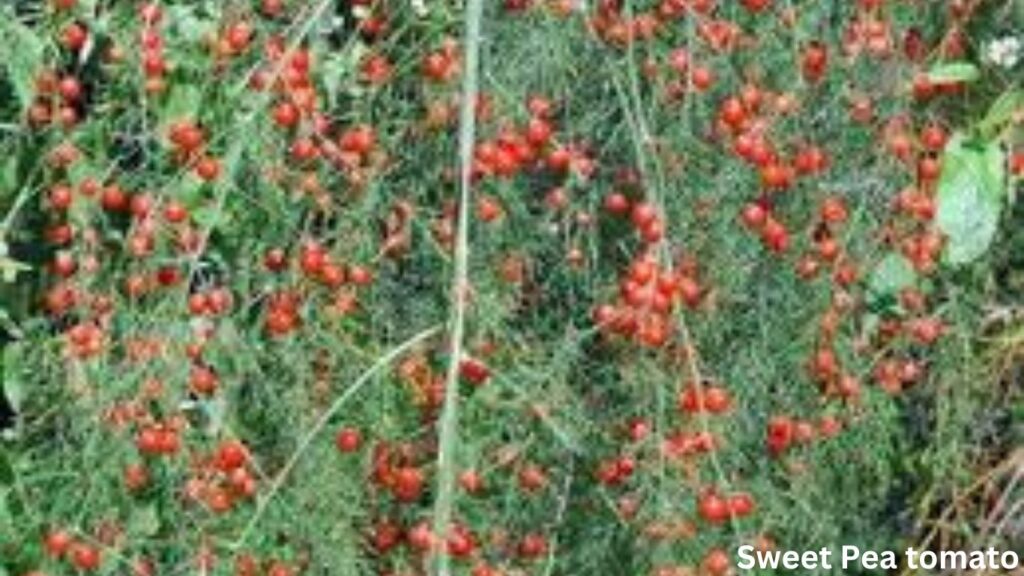
Sweet Pea: The 1/4-inch to 1/2-inch red fruits of ‘Sweet Pea’ are small in size but big in flavor, delicious for fresh eating or drying.
Plants produce small leaves on stems 6 feet or more tall; Let them grow out of a large hanging basket or let them stand upright in a container supported by a large cage.
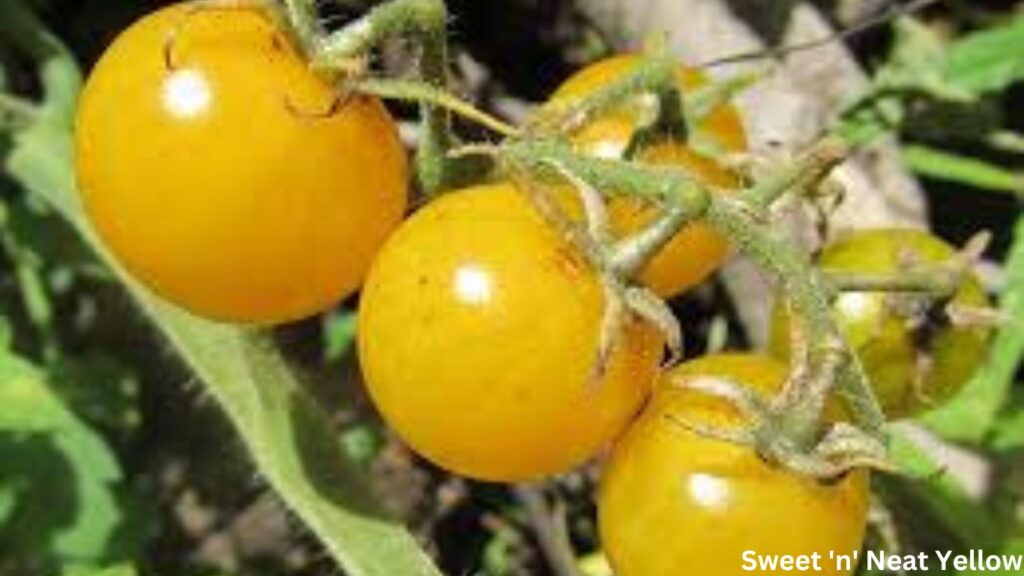
Sweet ‘n’ Neat Yellow: ‘Sweet ‘n’ Neat Yellow’ is hard to beat for a long harvest of yellow cherry tomatoes from a pot.
Branched plants are typically about 1 foot tall, small enough to grow indoors.
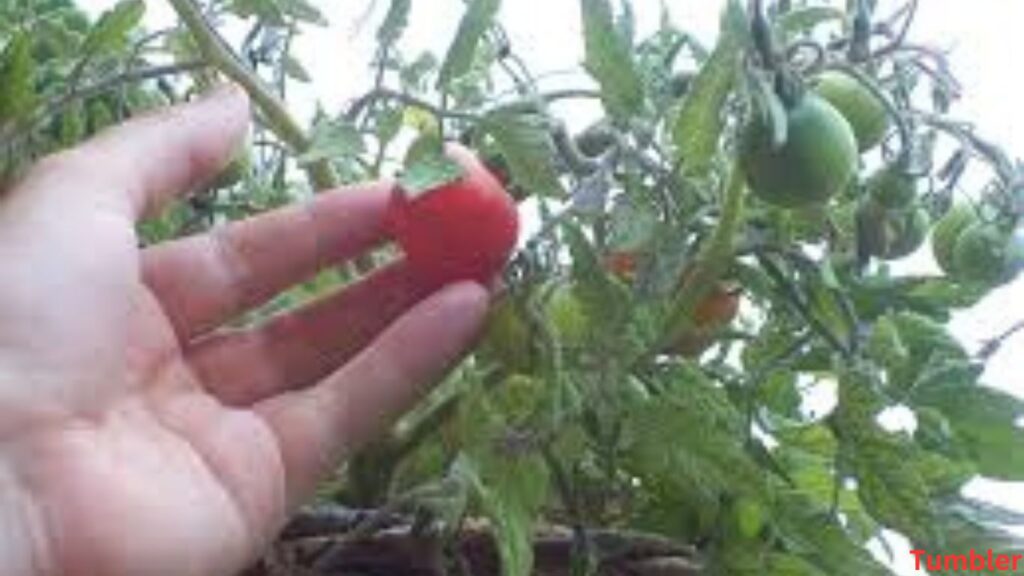
Tumbler: This red-fruited cherry tomato has gracefully branching stems that can cascade 3 to 6 feet from a hanging basket.
It also looks good in a regular container and will become upright if you support the plant with a cage.
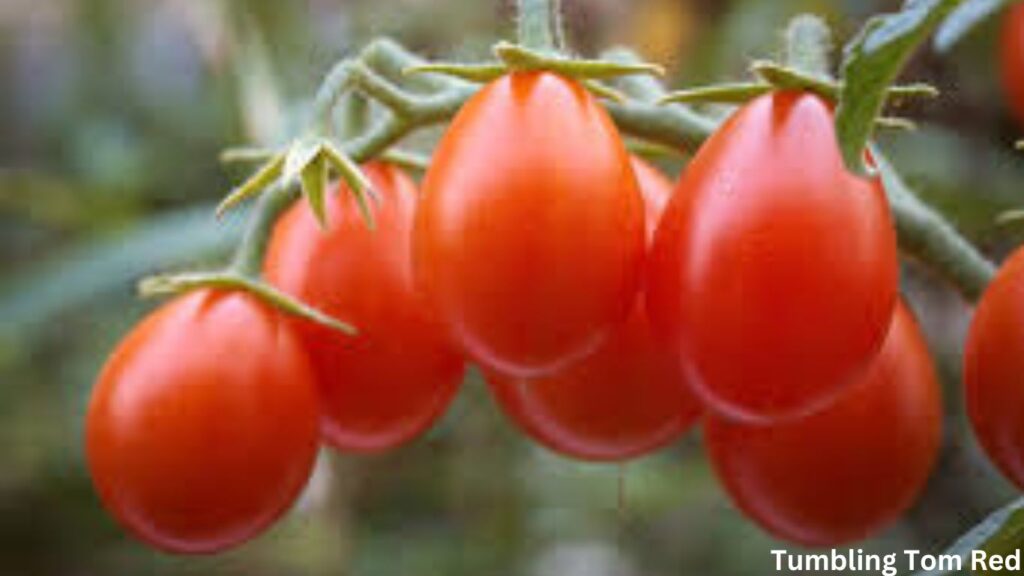
Tumbling Tom Red: Trailing stems of ‘Tumbling Tom Red’ can grow 18 to 24 inches tall, with round to slightly oval, 1- to 2-inch red fruits starting about 60 days after planting.
Tumbling Tom Yellow may not produce a lot of fruit, but they are very sweet.
The combination of the two colors makes for a lovely hanging basket display.
Conservation Safe Assortments But The Genuine Diversion Changer?
Resistant Species: They’re like the superheroes of the tomato world, taking on the microbes and rising to the top.
Environmental Pressure: Overwatering, underwatering, and conflicting watering can all cause brown spots on your tomato plant leaves.
Overwatering can cause root spoil, which can eventually slaughter your plant.
On the other hand, being beneath water can stretch your plant, causing brown spots on leaves.
It may gotten to be focused and brown spots. So, keep in mind, consistency in watering is key to anticipating this.
In brief, brown spots on your tomato plant takes off can be a sign of parasitic illness, bacterial disease or natural stretch.
Recognizing the cause is the to begin with step toward a arrangement.
Straight forward Care Hones to Avoid Brown Spots
Proper Ventilation:
Let’s conversation approximately wind stream. It’s like the soul of your tomato plants, key to keeping them new and disease-free.
Go through the leaf litter on your tomato plants. Tomato plants tend to feel unbalanced when they are as well near.
Packing is a party welcome for contagious and bacterial infection.
Therefore, allow your plants a few elbow room.
Position Them Correctly:
And do not disregard around the trimmings. It’s like giving your plants a great hair style, evacuating undesirable takes off and advancing great discuss circulation.
Soil Wellbeing and Dietary Balance:
Your tomato plants aren’t picky, but they do like a adjusted count calories.
Overfertilizing is like nourishing them garbage nourishment, it leads to stretch and those feared brown spots.
So keep the adjust of the fertilizer. Not as well much, not as well less.
It ought to be well-draining. Waterlogged soil is a breeding ground for root decay and other awful things.
Think around it this way: Your plants require a great drink, not a shower. So, guarantee that your soil channels well.
Remember, a small care goes a long way to anticipate brown spots on your tomato plants.
So, roll up your sleeves and deliver your green companions the cherish they merit.
Natural Stretch Moderation
Underwatering: If you take note that your tomato plant’s takes off are looking fresh with brown edges, Need of water.
Along with disgraceful watering hones, is regularly the to begin with cause of tomato plant browning.
In spite of the fact that these plants abhor to be waterlogged, they are very parched, requiring profound and visit water.
Waterlogging your tomato plants can rapidly lead to brown clears out, shrinking and spoiling.
It can moreover cause bloom drop, which implies you won’t get any natural product in summer.
Be that as it may, if your plant is fruiting, your tomatoes may be difficult and dry.
How to settle The best way to avoid and settle brown, shriveled clears out is to appropriately water your plants.
Tomato plants ought to be watered gradually, profoundly, and frequently.
This is particularly imperative when plants are building up themselves.
But you ought to keep up this hone, indeed when your plant is energetic and apparently healthy.
Tomato plant root frameworks go profound into the soil.
Shallow watering implies these profound roots do not get sufficient water, driving to water push and leaf browning.
The best way to water is to center the water into the soil around the base of your plant.
It is too critical to maintain a strategic distance from overhead watering as much as conceivable as this causes sprinkling, which makes a difference spread disease.
Water the tomato plant in the morning when it is cold.
Less vanishing takes put amid this time, which preserves water and guarantees your tomato plants have sufficient water all through the day.
When you water your tomato plants is fair as vital as how you water them.
Since they do not appreciate being splashed in water, you shouldn’t water your tomatoes when the soil is still wet.
Bloom and Decay
A bizarre brownish color can moreover happen on tomato natural product.
If you take note brown, sticky spots on the underside of your tomatoes, you’ve got a case of bloom conclusion spoil.
Whereas this malady may appear like it can murder your plants, they can bounce back rapidly with appropriate care.
Rot ordinarily begins at the blossom tip of tomato natural product, looking like a water-soaked, pale brown spot.
As it creates, the edge of the blossom gets to be dim brown and rough, and inevitably dark. The spoiling edge straightens as it spreads.
Blossom conclusion decay is more often than not seen when tomato natural products reach around half their develop estimate.
Shockingly, once a natural product blooms and spoils, it must be evacuated and discarded.
There are numerous causes of bloom conclusion spoil, such as overwatering or conflicting watering of your tomato plants, or a calcium deficiency.
If you water your tomato plants legitimately by taking after the over tips, you may not experience soil problems.
Calcium insufficiency comes about from a assortment of variables, ordinarily including the plant’s capacity to assimilate calcium or maybe than calcium insufficiency.
Disgraceful pH levels, over the top nitrogen, and fluctuating soil temperatures can all influence calcium assimilation.
How to Settle:
The best way to recognize issues with your soil is to test your soil. From there, you can adjust your soil. Tomatoes develop well in somewhat acidic soil.
If your soil test comes about appear a more antacid pH level, you’ll require to include something like compost to gradually alter the pH over time.
On the other hand, if your soil is as well acidic, correct it by applying lime.
If you discover in your soil test that there is as well much nitrogen, you require to alter your fertilizer.
As well much nitrogen not as it were influences how much calcium your tomato plants take up.
One of the primary side effects of tall nitrogen levels is leggy, bushy tomato plants with little natural products.
The right fertilizer is vital to the generally wellbeing of your tomato plants, not fair anticipating bloom conclusion rot.
Use a moo nitrogen, tall phosphorus fertilizer when nourishing your tomatoes for best comes about and to maintain a strategic distance from calcium retention problems.
Sometimes, the soil temperature is as well hot or as well cold, which influences how successfully the plant takes up supplements.
The best arrangement is to mulch around the base of the plant utilizing materials like straw Mulching controls soil temperature and keeps up appropriate dampness levels.
Insect Vermin
Insect vermin are common, minor bugs that can wreak destruction on your tomato plants rapidly.
The two-spotted bug, these bugs like to overrun tomato plants in huge bunches, settling beneath the clears out.
Like aphids, insect vermin suck the sap from the takes off, which causes the odd brown spots.
This causes the clears out to dry up, ended up reddish-brown and some of the time turn yellow.
The takes off will in the long run kick the bucket and drop.
If cleared out unattended, creepy crawly bugs can rapidly defoliate the plant, causing plant death.
How to Settle:
These modest creepy crawlies flourish in dry, hot climates.
The best way to anticipate insect vermin from settling on your tomato plants is to impact the quick environment.
Proper watering hones offer assistance keep your tomato plants sodden and cheerful, ceasing creepy crawly bugs from getting close them.
If these little bugs have as of now taken up home in your plants, there are a few ways to get freed of them some time recently they do as well much harm.
Minor pervasions can be effortlessly controlled utilizing agricultural splashes like neem oil.
On the other hand, you can utilize an insecticidal cleanser. Both insect bugs and hatchlings are misleading, frequently halting pervasions in their tracks.
However, if webbing proceeds to spread and your tree’s wellbeing proceeds to break down, in spite of the steps you take, you may require to evacuate of your tree.
Bacterial Leaf Spot
Bacterial leaf spot is another common malady that as often as possible influences tomatoes.
It influences the takes off, but it can spread to other parts of the plant, counting the natural product and stems.
Bacterial leaf spot is caused by the xanthomonas microbes and can spread rapidly not as it were to one plant, but to the rest of your vegetable.
Infected plants create adjusted, brown, water-soaked spots on the takes off.
In most cases, these spots are encompassed by a pale yellow corona As the malady spreads, these spots moreover show up, causing whole plants to be spotted with ringed, brown specks along the natural product. In most cases, the clears out begin to turn yellow and drop off, coming about in rot and extreme sunscald.
How to Settle:
Shockingly, a tomato plant tainted by bacterial leaf spot cannot be spared.
If you see this illness on your plants, rapidly evacuate of them some time recently it spreads to your solid stock.
Prevention is the best remedy when it comes to this illness, and luckily, it’s moderately simple to do.
Your to begin with step is presenting bacteria-free seeds and transplants into your plant.
Check plants for malady indications some time recently planting and store seeds appropriately to maintain a strategic distance from afterward problems.
Proper watering moreover play an vital part in bacterial leaf spot prevention.
Avoid watering your plants head on, as this energizes numerous illnesses, counting bacterial leaf spot. Instep, center on the soil at the base of the tree.
Adding to its unstable nature, bacterial leaf spot spreads rapidly and spreads through soil and plant flotsam and jetsam amid the winter.
For this reason, practicing great plant cleanliness is significant. Continuously clean and purify your some time recently utilize and between plants.
Another imperative propensity is to keep your bed as clean as conceivable by expelling weeds and plant debris.
In expansion, anticipate the spread of infection and to keep up the by and large wellbeing of vegetable patches, counting little ones.
Beginning Curse
Early scourge is another illness that will cause your tomato plants to create unusual brown spots.
This parasitic infection is exceptionally dangerous, but if caught in time, you may still be able to spare your tomato crop.
Early scourge is caused by the organism Alternaria solani and spreads through the discuss, but gradually taints plants.
Tainted plants regularly create little half inch spots on their takes off. They are as a rule light brown, with a tan.
In the early stages of early scourge, side effects take after those of bacterial leaf spot.
Be that as it may, they are significantly distinctive infections. As early scourge spreads, the little brown spots extend, obscure, and shape a yellow radiance.
If cleared out, the tainted clears out drop off, and the rest of the plant gets to be tainted.
Both the natural product and stems of your tomato plant will create their claim spots.
How to Settle:
Early Curse, like most infections, can have a destroying impact on your entirety edit.
Luckily, the illness is reparable and effortlessly preventable if caught early.
Make reviewing the takes off of your tomato plants a portion of your day by day cultivating schedule.
This will offer assistance you spot bothers and maladies like early scourge, making it much more sensible.
If you take note the advancement of early scourge spots, expel the contaminated takes off instantly.
It is suggested to apply a copper-based fungicide to your plants to murder waiting infections.
As is the case with most infections and bugs, avoidance is much simpler than attempting to oversee the issue once it has been identified.
The organism Alternaria solani overwinters in the soil and can cling to any plant flotsam and jetsam cleared out around your plant.
It is best to hone trim turn with great plant cleanliness and legitimate watering methods.
Mulching around the base of your plants avoids water from getting on the takes off and keeps weeds down.
Additionally, you can select to stake or cage your tomatoes to keep the leggy development off the ground and empower discuss circulation between the plants.
You can moreover plant a blight-resistant assortment, ordinarily a cross breed tomato.
Late Scourge
Late scourge is regularly befuddled for early curse as they are both contagious maladies that regularly taint individuals of the nightshade family and have comparable indications.
Be that as it may, they are totally diverse illnesses. Late scourge is rarer than early scourge and is caused by the Phytophthora infestans pathogen.
Not at all like early curse, this malady takes hold rapidly, contaminating plants inside hours, with indications showing up inside days.
A entire tomato plant will rapidly create a extend of spots. On clears out, these spots begin out pale green but rapidly turn dull brown.
At long last, they will turn dark. In greatly muggy conditions, late scourge causes a white fluffy form development on the underside of the leaves.
Stems, on the other hand, deliver brown spots on the exterior of the bat.
It obscures as it spreads and can rapidly slaughter whole stems and vines.
On the natural product, brownish-gray skin spots show up, along with a white fluffy form when wet.
How to Settle:
Shockingly, there is no remedy for late scourge. Once your tomato plant is contaminated, it ought to be pulled up and crushed.
In any case, like early curse, it is a moderately preventable disease.
Proper watering hones, great plant cleanliness, and edit revolution are key to avoiding infections from contaminating your plants.
Make beyond any doubt you purchase disease-resistant assortments, mulch your tomato stakes or cages and around their base.
Canker Effect Brown Leaves on Tomato Plants in Containers
Another common infection that can cause your tomato plants to turn brown is canker.
Canker is caused by the bacterium Clavibacter michidanensis and can slaughter your plants quickly.
Infected takes off appear brown, wrinkled edges and huge brown spots. In most cases, yellow lines are seen between these brown regions.
As the canker advances, the leaf veins may sink and start to obscure. Tainted clears out shrink and inevitably die.
A comparable brown discolouration is too seen in the stem. As it spreads, they are ordinarily broken and prickly.
Tomato natural product is moreover not safe from canker. They ordinarily create little light brown injuries with a yellow radiance.
These spots are regularly raised and may start as white some time recently turning brown.
How to Settle:
Tragically, canker canker is reparable. If your tomato plants become infested, there are things you can do to save them.
Drag out tainted plants and watch the rest of your vegetable fix for any signs of spread. Fortunately, canker can effortlessly be anticipated.
This bacterial infection flourishes in the same conditions and environment as other illnesses, counting all the ones specified already.
Continuously purchase seeds and substitutions from trusted retailers, and check your plants for any signs of malady some time recently carting them domestic.
You can too flush your seeds by taking after the over tips for great measure.
Applying day by day checks to your cultivate schedule will offer assistance you capture
As with most of the illnesses on this list, canker is preventable by great plant cleanliness and appropriate watering hones.
Mulching along with edit turn makes a difference anticipate canker.
Verticillium Shrivel
Verticillium shrink is another exceptionally unsafe illness that not as it were crushes tomato plants, but moreover numerous other plants and ornamentals.
Caused by the soil-borne organism Verticillium dahliae. This annihilating malady influences different plants in diverse ways.
Be that as it may, in tomatoes, one of the primary side effects is browning of takes off and stems.
To begin with, Verticillium shrink influences the more seasoned, lower clears out, causing them to turn yellow.
As it compounds, these takes off will create expansive brown spots. Inevitably, the takes off pass on and drop from the plant.
Brown streaks create on contaminated stems, which may too show up as patches.
If cleared out unchecked, verticillium shrivel can rapidly spread to the rest of your cultivate, causing devastation fair as it does.
How to Settle:
Tragically, no fungicide can combat this dangerous illness. Tomato plants influenced by verticillium shrink ought to be evacuated and destroyed.
However, it is effectively anticipated. For starters, you can as it were plant assortments that are safe to Verticillium wilt.
In expansion, practicing great cultivate cleanliness, edit turn, and the appropriate watering hones specified over too offer assistance anticipate this disease.
Final Thoughts
Whether you are unused to developing tomatoes or a prepared cultivator, you may still experience the issue of browning tomatoes or tomato clears out.
In spite of the fact that a few infections and bothers can have annihilating results, all are effectively killed.
By taking after the over tips on appropriate watering hones, mulching and great plant cleanliness hones, you can have problem-free tomatoes all season long.
Reference:
